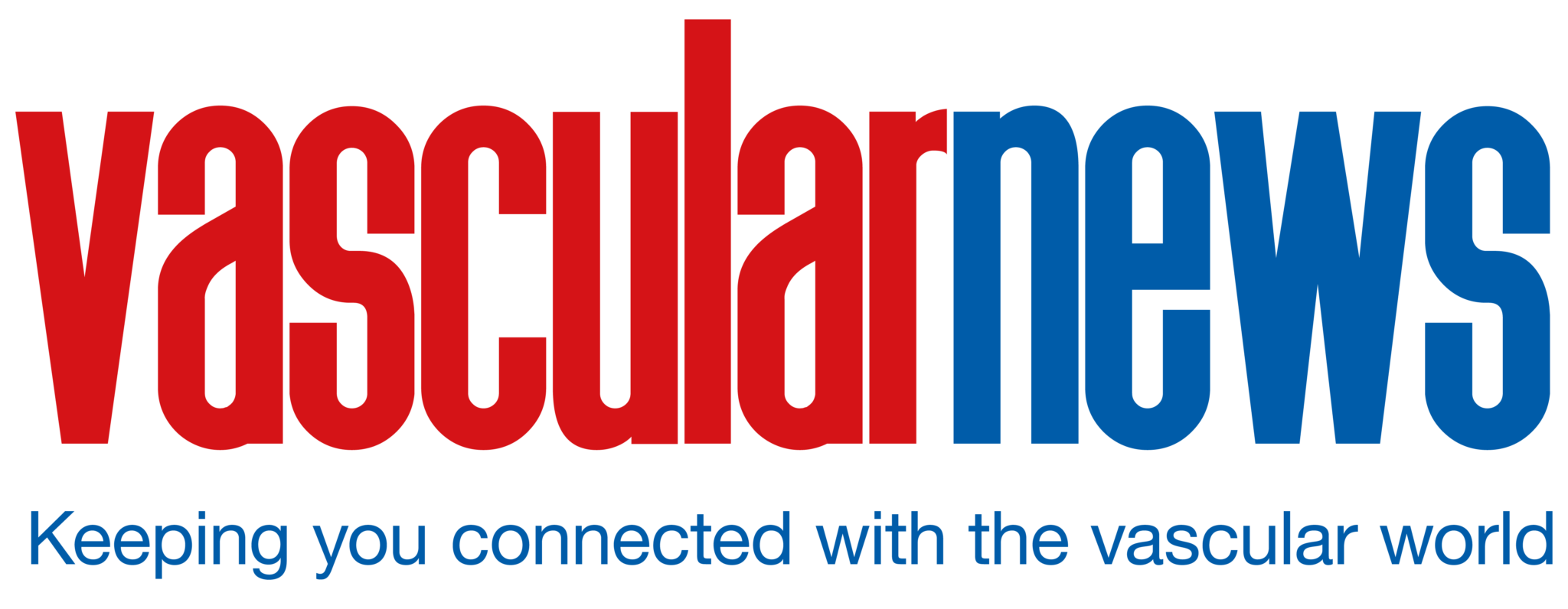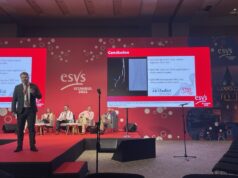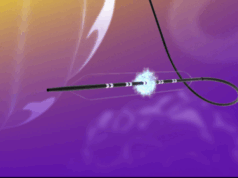
Shockwave intravascular lithotripsy (IVL) “expands endovascular strategies for iliac occlusive disease and can facilitate a ‘leave nothing behind’ approach,” Stefano Fazzini (Tor Vergata University, Rome, Italy) and colleagues write in an open-access Journal of Vascular Surgery (JVS) paper highlighting midterm outcomes from the IVLIAC registry—a multicentre, retrospective study of prospectively collected data.
“Calcium remains a challenge in the endovascular treatment of iliac artery disease, affecting both procedural and long-term outcomes,” Fazzini tells Vascular News. He goes on to comment that the standard approach of primary stenting, “although effective, is susceptible to stent recoil and under expansion in heavily calcified vessels” and notes that extensive calcification increases the risk of ruptures, especially when high-pressure balloons or balloon-expandable stents are used.
Fazzini also stresses that “no single stent is ideal for all calcified iliac lesions,” and that unnecessary stenting, especially at the bifurcation or when covering key branches, “can be avoided”.
In light of this, Fazzini et al set out to evaluate the midterm outcomes of patients with calcified iliac lesions treated with IVL, with or without adjunctive stenting, and to propose a new algorithm guiding these different treatment strategies.
The new algorithm, Fazzini explains, is based on lesion type (stenosis versus chronic total occlusion) and intraoperative functional assessments (extravascular ultrasound and pressure gradient) to determine whether stenting is necessary. “The impact of sonic pressure waves improves vessel compliance and luminal gain, but such modifications may not always be evident on digital subtraction angiography alone,” he says, adding that intraoperative functional assessments play a “crucial” role in determining whether IVL alone is enough.
The investigators included all consecutive patients at four centres (Rome, Milan, Negrar and Trento) who underwent treatment with the Shockwave Medical peripheral IVL system for calcified iliac arteries from February 2021 to May 2024. Indication for IVL was Rutherford category of three or above in iliac lesions with moderate-to-severe calcification and was based on the new algorithm. The primary endpoint was primary patency, with assisted primary patency, secondary patency, and freedom from iliac complications also analysed.
Fazzini and colleagues share in JVS that a total of 100 iliac arteries were treated in 86 patients. They note that chronic limb-threatening ischaemia (CLTI) was present in 55% of patients, mean target lesion length was 40.95±29.25mm with a mean stenosis of 84±10%, and 12 of the lesions were chronic total occlusions. The authors report that technical success was 99% and that target lesions were treated with IVL alone in 77% of cases, whereas IVL plus adjunctive stenting was employed in the remaining 23% of the cases. They add that provisional stenting was performed in 11% of cases, while planned stenting was performed in 12%, and that mean residual stenosis was 14.95±14% at final angiogram. Primary patency and assisted primary patency at 24 months were 95% and 98%, respectively, while secondary patency was 100%. Primary patency showed no statistically significant difference between the IVL only and IVL plus adjunctive stenting groups.
“Shockwave IVL offers a safe and effective treatment option for calcific iliac occlusive disease,” the authors write in their conclusion. “This multicentre experience shows promising midterm results in terms of primary patency despite the very low stenting rate, preserving future treatment options.” They go on to stress that further studies are needed to confirm these findings.
Discussing the findings with Vascular News, Fazzini summarises that, in cases of severely calcified disease, “Shockwave IVL as a first-line strategy in iliac interventions allows for either the avoidance of unnecessary stenting or optimisation of stent expansion, both of which contribute to favourable midterm outcomes”.













